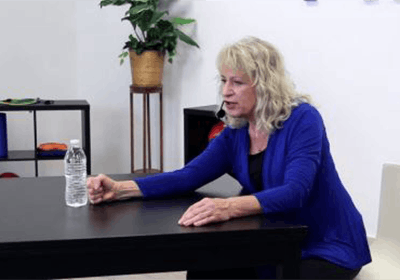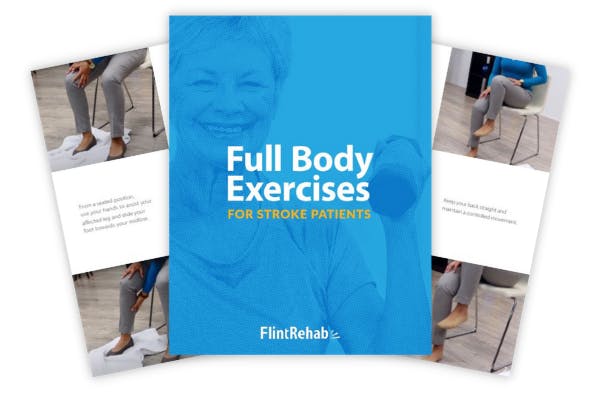Exercise for Stroke Patients with Paralysis: How to Get Started


To perform this exercise, slide your arm across the table to ‘punch’ the water bottle, and then pull your arm back, using your other arm to assist with the movement. It can also become an active exercise by initiating the whole movement with your affected arm.
These exercises help restore movement after post stroke paralysis by reconnecting your mind to your muscles.
Mental practice involves imagining (or visualizing) yourself doing the movements you want to get better at. This helps activate neuroplasticity just as physical practice does.
Stroke patients who struggle with paralysis can benefit from combining mental practice with passive exercises since the mind and body are connected and both require healing.
For example, if you want to regain movement in your arm, spend time visualizing yourself doing the Punching Movement above. Then, after your visualization, practice the movement in real life.
Combining mental practice with physical practice leads to even better results.
Paralysis Recovery After Stroke
Exercise is the essence of paralysis recovery after stroke. Practicing passive rehab exercises on a daily basis helps provide the brain with the stimulation it needs to heal.
The more consistent you are with daily exercise, the better your chances of recovery will be. It’s important to be patient with your results, and celebrate small signs of recovery.
For instance, if you begin to see twitches in your affected arm or hand, that’s a sign that movement is returning. Keep up the hard work, and you will persevere on the road to recovery.
Keep it Going: Get a Free Rehab Exercise Ebook (25 page PDF)

Get our free ebook filled with 25 pages of rehab exercises featuring photos of licensed therapists. Sign up below to get your copy!
When you sign up, you’ll also receive our popular Monday newsletter that contains 5 articles on stroke recovery.
We never sell your email address, and we never spam. That we promise.
